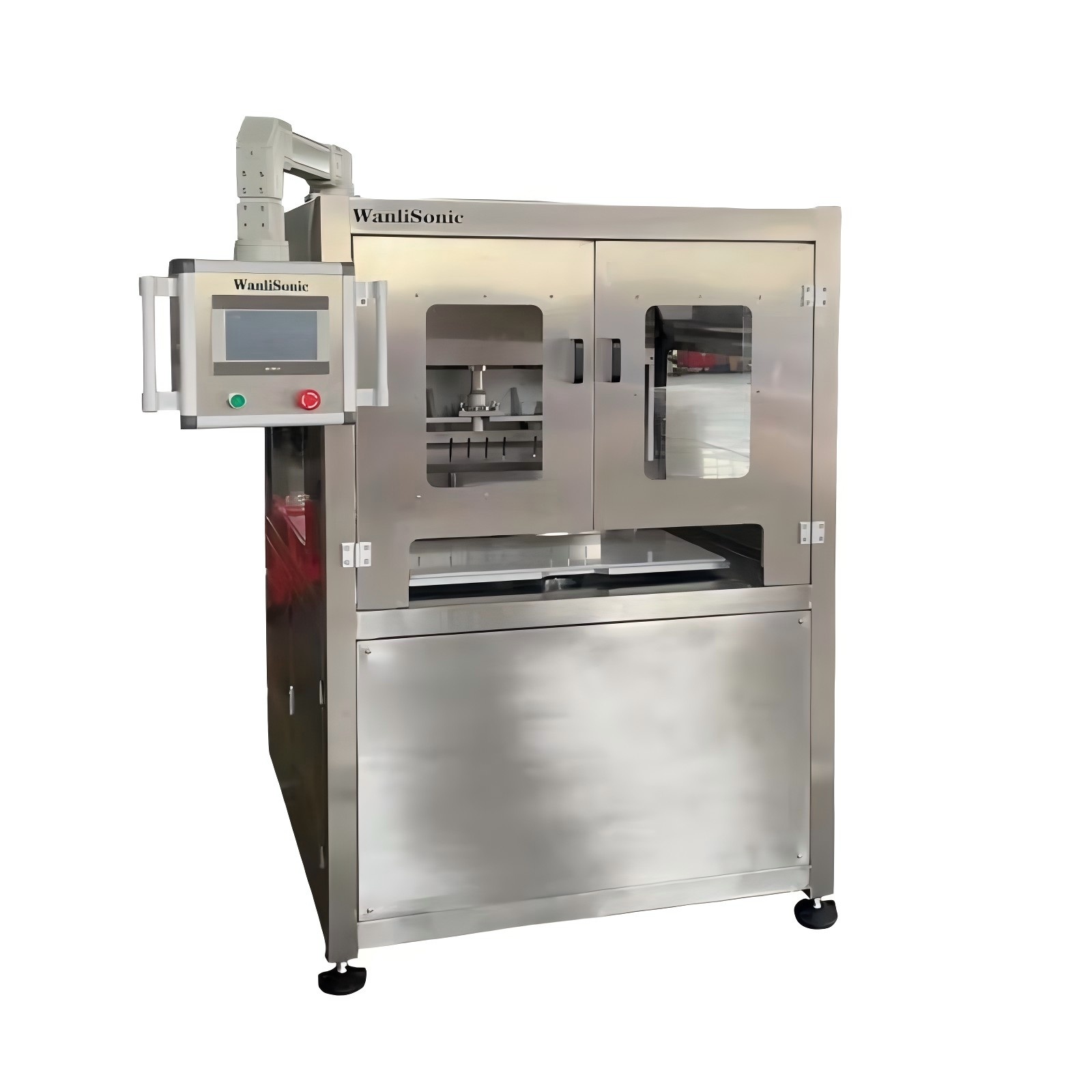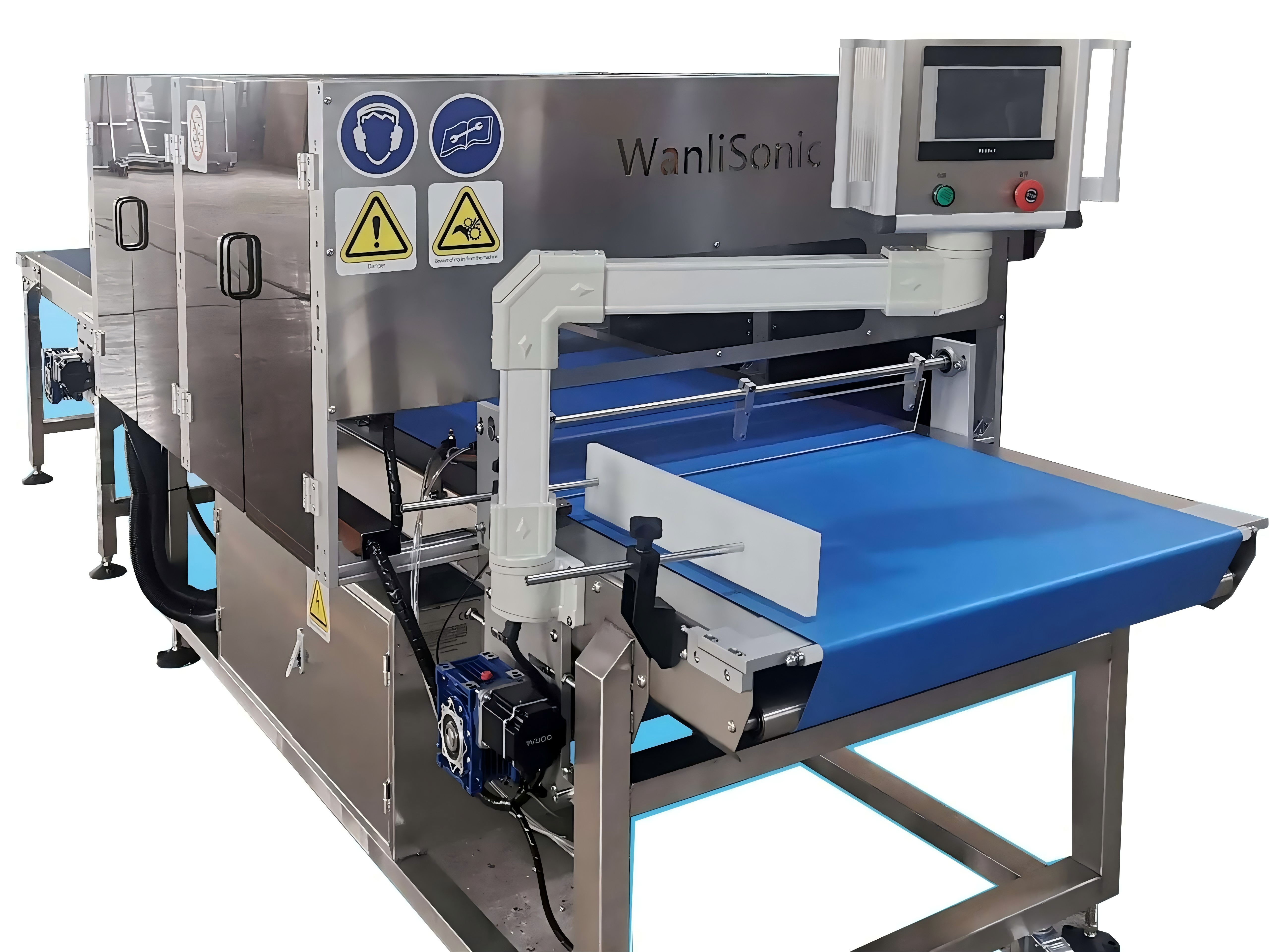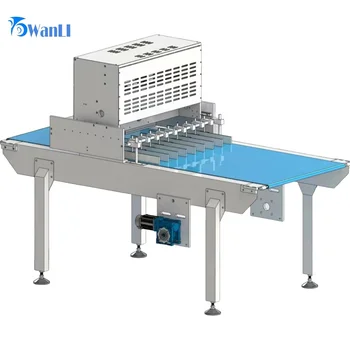Ultrasonic Bread Cutting Machine
Introduction
In the world of baking, precision is key. Whether it’s artisanal sourdough or commercial sandwich bread, perfect slicing is essential for presentation, quality, and customer satisfaction. Enter the ultrasonic bread cutting machine, a groundbreaking innovation transforming the way bakeries slice bread.
This blog explores the technology behind ultrasonic bread cutting machines, their features, and the numerous benefits they bring to the baking industry. Let’s dive into why these machines are the future of precision bread cutting.
What is an Ultrasonic Bread Cutting Machine?
An ultrasonic bread cutting machine uses high-frequency sound waves to power its blades, making precise, clean slices with minimal friction. Unlike traditional slicers, ultrasonic blades vibrate at frequencies over 20,000 Hz, allowing them to cut through bread effortlessly without compressing or tearing it.
The Technology Behind Ultrasonic Cutting
How Ultrasonic Cutting Works
The process involves converting electrical energy into mechanical vibrations, which are transmitted to a specially designed blade. These vibrations reduce friction and pressure, enabling the blade to slice through bread seamlessly.
Why Ultrasonic Blades are Ideal for Bread
Bread, with its combination of soft crumb and firm crust, is notoriously difficult to slice cleanly. Ultrasonic blades excel by:
- Cutting without applying excessive pressure.
- Minimizing crumbs and waste.
- Maintaining the loaf’s original structure and appearance.
Features of the Ultrasonic Bread Cutting Machine
1. Precision Slicing
Ultrasonic bread cutting machines offer unparalleled accuracy, ensuring every slice meets exact thickness specifications.
2. Adjustable Thickness Settings
With adjustable controls, bakers can customize slice thickness to match customer preferences or packaging requirements.
3. Built-in Conveyor System
Many machines feature conveyors equipped with stabilizing baffles to keep bread steady during slicing, ensuring uniform results.
4. Edge Trimming Capabilities
For certain products, edge trimming is vital for presentation. These machines can trim crusts or edges cleanly, creating perfectly shaped slices.
5. Hygienic and Easy to Clean
Food-grade materials and a streamlined design make cleaning and maintenance straightforward, meeting the highest hygiene standards in the baking industry.
Benefits of Using Ultrasonic Bread Cutting Machines
1. Cleaner Cuts
Traditional blades often drag through the bread, leaving behind uneven edges and excessive crumbs. Ultrasonic technology eliminates this issue, producing smooth, clean slices every time.
2. Reduced Waste
By cutting precisely and minimizing crumbling, ultrasonic machines help bakeries save money and reduce waste.
3. Time-Saving Efficiency
These machines are faster than traditional slicers, increasing production output and streamlining operations.
4. Versatility
From delicate, filled bread like brioche to dense, crusty loaves, ultrasonic bread cutters handle all types of bread with ease.
5. Improved Product Presentation
Perfectly sliced bread enhances visual appeal, which is essential for attracting customers in retail settings.
Applications of Ultrasonic Bread Cutting Machines
Commercial Bakeries
For bakeries producing large quantities of bread, ultrasonic machines ensure consistency and speed.
Specialty Bread Makers
Artisanal bakers benefit from the precision and gentleness of ultrasonic cutting, which preserves the unique texture of specialty loaves.
Packaged Bread Manufacturers
Pre-sliced, packaged bread needs to be uniform in size and shape. Ultrasonic machines make this process seamless and efficient.
Edge Trimming: A Key Feature
Edge trimming is a vital aspect of bread slicing for many manufacturers. Here’s why:
- Neat and Uniform Appearance: Trimmed edges make packaged bread look professional and polished.
- Reduced Packaging Issues: Uniform slices fit better into packaging, reducing damage during transport.
- Sustainable Practices: Trimmed crusts or edges can be repurposed into breadcrumbs or other products, minimizing waste.
Comparison with Traditional Bread Cutting Machines
1. Cutting Precision
Traditional slicers use sharp edges and brute force, often leading to uneven cuts. Ultrasonic machines, by contrast, rely on vibration-based technology for precise, clean slicing.
2. Maintenance and Durability
While traditional machines may require frequent blade sharpening, ultrasonic blades last longer and require less maintenance.
3. Cost-Effectiveness
Although the upfront cost of ultrasonic machines is higher, their long-term savings in waste reduction, time, and maintenance make them more economical.
Choosing the Right Ultrasonic Bread Cutting Machine
1. Production Needs
Evaluate your production volume and select a machine that matches your output requirements.
2. Bread Types
Consider the types of bread you produce. Whether it’s soft, filled bread or crusty loaves, ensure the machine can handle your specific needs.
3. Customization Features
Look for features like adjustable slice thickness and edge trimming to cater to diverse customer demands.
4. Ease of Cleaning
A machine that’s easy to clean will save you time and effort while maintaining hygiene standards.
The Future of Bread Cutting Technology
As consumer demands for quality and consistency grow, ultrasonic bread cutting machines are likely to become even more advanced. Innovations like AI integration and real-time adjustments will further enhance their performance, making them indispensable in modern bakeries.
Sustainability will also play a role, with manufacturers exploring ways to reduce energy consumption and recycle materials used in the cutting process.
Conclusion
The ultrasonic bread cutting machine is a must-have for any bakery aiming to improve efficiency, reduce waste, and deliver high-quality products. Its advanced features, such as precision slicing, edge trimming, and hygienic design, address the challenges faced by traditional cutting methods.
By investing in ultrasonic technology, bakeries can stay ahead in a competitive market, meeting customer expectations for perfect slices every time. Whether you’re running a small artisan shop or a large-scale production facility, this machine is a game-changer in the baking industry.
FAQs
1. How does an ultrasonic bread cutting machine work?
It uses high-frequency vibrations to slice through bread with minimal friction, ensuring clean and precise cuts.
2. What are the benefits of ultrasonic slicing over traditional methods?
Ultrasonic slicing offers cleaner cuts, reduced waste, faster operation, and better handling of delicate or dense breads.
3. Can ultrasonic machines handle high production volumes?
Yes, these machines are designed to meet the demands of large-scale production while maintaining consistency.
4. Are ultrasonic bread cutting machines easy to clean?
Absolutely! They are made with food-grade materials and feature simple designs for quick and thorough cleaning.
5. Is the initial investment worth it for small bakeries?
While the upfront cost is higher, the long-term savings in waste reduction, maintenance, and improved product quality make it a smart investment.






